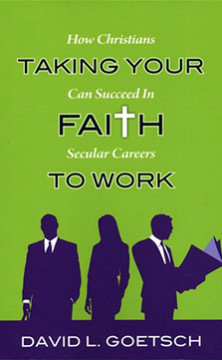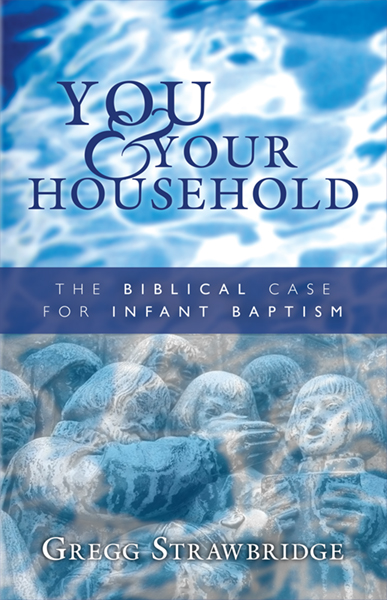We are quickly moving to that time of the year
when we will be bombarded with
advertisements concerning weight loss. New Year resolutions for weight loss are
practically on the liturgical calendar of America. Somewhere around the beginning
of a new year, people resolve that they will get in better shape. Maybe they
are made to feel guilty by the obesity police in our country (whose standards
are, many times, very unrealistic, one-size-fits-all approaches). Perhaps they
are outgrowing their wardrobe, or maybe some
legitimate health concerns are resulting from carrying too much fat on
their bodies. (Heart disease, diabetes, high cholesterol, high blood pressure,
and such the like, though they can be hereditary, are, many times, the result
of poor diets and lack of consistent physical exertion.)
Our savvy entrepreneurs are ready to cash in on
the resolutions. Fitness or health clubs will incentivize the resolute by
offering special deals. And Americans will consume the offer. From the year
2000 to the year 2014, revenue for these fitness centers increased from 11.6
billion dollars to 24.6 billion dollars.[1] Of course, to go to the gym one needs to look good, so we buy
athletic apparel to the tune of 30 million dollars a year.[2]
Though in many areas of our country the health
and fitness craze is a perverted obsession, we have put our collective finger
on a real issue: our bodies need consistent care. As technology advanced over
the past century or two, we moved from a predominately manual labor society to
having machines do the strenuous physical work for us. We still work hard, but
the work tends to be more with our minds and managing the machines. People like my grandfather were glad
to see this day coming. When I was a boy, he refused to teach me certain skills (for better or worse) because he
didn’t want to see me have to work as hard as he had. He wanted an easier
physical workload for me. That has happened, not only for me but also for the great majority of our society.
Consequently, we are more sedentary in our work than previous generations. We
sit in chairs behind desks or, if we are more physically conscientious, we have
standing desks or sit on exercise balls. Nevertheless, the amount of physical
activity related to our vocations has decreased exponentially. All of this good technology that has produced physical rest
has resulted in a new set of issues that call for lifestyle adjustments.
Our bodies were
made for physical exertion; they were made
to face resistance, work through it, and become stronger through the entire
process. When we don’t go through this resistance, our bodies fall into the
disrepair of atrophy and disease. God gave us food to fuel this process. Bread
strengthens the heart of man (Ps 104.15). Honey gives energy to weary (1Sam
14.25ff.). Our bodies need the appropriate fuel for the work that we face.
That, of course, is different from individual to individual depending upon his
level of physical activity. When physical exertion is neglected and our diets are
out proportion with our activity, the
fuel becomes more of a poison to our
bodies; it may be a slow-acting poison, but it is a poison nonetheless.
On the outside-looking-in,
there is this (Reformed?) guy who thinks this whole emphasis on exercise and diet
is silly. He understands that he has freedom in Christ, that all of these rich foods are gifts from God, and that he can
imbibe with thanksgiving. And imbibe them
he does! In our relatively rich society, he eats and drinks better than many
kings of old. He eats and drinks what he wants,
when he wants, and in the amount he wants. If anyone tells him that he really needs to be careful and take care of his
body a little better, he may even defensively retort that what the person is
espousing is a “doctrine of demons” (1Tm 4.1ff.). But is he? Is there a
biblical rationale for caring for your body through diet and exercise? I
believe that there is.
Learning this rationale began for me back when I
was in my late twenties. (I am fifty years of age as I write this.) I was
somewhere around two-hundred sixty-five pounds on a six-foot-one-inch frame. I was wearing a forty-two-inch waist pant. And I was as happy as a hog in mud (and kind of looked like one). I was the one that
would say, “Well, we’re all going to die anyway. I might as well die eating
what I want!”
But then I started teaching my congregation the
Ten Words. While I was reading Thomas Watson’s exposition of the Sixth Word in
his book The Ten Commandments, I was
convicted about my slow self-murder. Watson said, “Many dig their grave
with their teeth.”[3] At that point, I realized
that cultivating bodily health was commanded by God. I didn’t fully understand
the rationale behind the command, but I knew I had to do something about my
lack of self-control and the consequent health problems. I also knew it would
be a challenge to teach my congregation about self-control while I looked like
Eglon, king of Moab.
I began some moderate exercise (about thirty
minutes of aerobic exercise in the mornings) and changed my diet significantly.
I lost between fifty-five to sixty-five pounds over the year. For the past twenty
years or so, there have been ups and downs and
the exercise routines have changed, but I have experienced the benefits of
cultivating health.
Through these years I have been able to reflect
a little bit more on biblical rationale
of maintaining healthy disciplines. Caring for and developing our bodies is
rooted in the nature of our creation. God
created man from the dust of the ground and commanded man to be fruitful and
multiply and fill the earth and subdue it. The agricultural images used are not
superficial metaphors. There is a correspondence between man and the ground.
Men plant seeds in women and fruit is
born from the womb. We are living, walking, breathing ground. Our bodies are gardens that need to be cultivated in many ways. We learn things about ourselves by
observing how the ground is glorified.
One lesson we learn is that our bodies need attention to be fruitful or
healthy. Our bodies need to be cultivated and nurtured, fighting back thorns
and thistles, in order that good, healthy
fruit can be produced.
We cultivate our bodies through “plowing them
up” with physical activity and “fertilizing them” with proper diet. The first
plot of ground for which God has given us stewardship is his little garden that
is our body. It is His body and caring for it properly is part of our dominion
mandate. We should learn how to bring our own
bodies into subjection. As we do that, then we are better able to fulfill the
other aspects of our dominion mandate.
The everyday
benefits of good routines of exercise and healthy
diet are well-known. Resistance or strength training (anaerobic exercise) and
endurance training (aerobic exercise) have positive effects on many areas of
your life. Combined with a consistently good diet, not only are things such as
blood pressure and bad cholesterol kept under control, but you are also helped with your mood. Good physical exertion is a stress reducer. A
college professor and pastor once told me, “Bill, you have a certain amount of
energy that you need to burn up physically. If you don’t burn it up, then it
will burn you up.” He was right. An overall balanced lifestyle of exercise,
diet, and rest helps reduce stress, increases overall energy, stimulates
hormones that can help with depression, boosts your immune system, and helps
prevent heart disease.
None of this should be a surprise to us who have
a biblical view of the body. God created us to fight the ground and make it
fruitful. He promised that we would see fruit. The health benefits, in general,
are part of that fruit.
None of this is to say that all of this is a
panacea that will make us immortal. Our bodies are still subject to death.
There will be thorns and thistles. And we are reminded at every funeral and Ash
Wednesday that we are dust and to dust we
shall return. This is the reality until the resurrection from the dead. Diet
and exercise do not have life in themselves and, therefore, should never become
an idol. We are working with dying, decaying bodies. Nevertheless, God has
commissioned us to do battle with the thorns and thistles and enjoy the fruit
of our labor. We do this when we battle disease; every time we take medicine or
administer it to someone else, we are battling the ground. We do this because
the body matters.
Improving and maintaining your health is not a
selfish endeavor. In fact, it is a form of service to others. As you maintain
your health, for example, you are able to handle stress better. Your
disposition toward others tends to be more pleasant. Improving your health also
helps your energy level so that you can work more efficiently, achieving more
in less time. Also, as you do what you are able to improve and maintain your
health, you are working so as not to become a burden to others as a result of
your indulgences through the years.
Therefore, beloved brethren, take up the battle of the bulge, cultivating your body to the glory of God. Present your bodies to him as a well-tended garden.
Originally published at Theopolis.
[1] http://www.statista.com/statistics/236120/us-fitness-center-revenue/
[2] https://www.quora.com/How-much-money-do-Americans-spend-on-fitness-products-each-year
[3] Thomas
Watson, The Ten Commandments (Carlisle, PA: Banner of Truth Trust,
1995), 145.
Read more
























